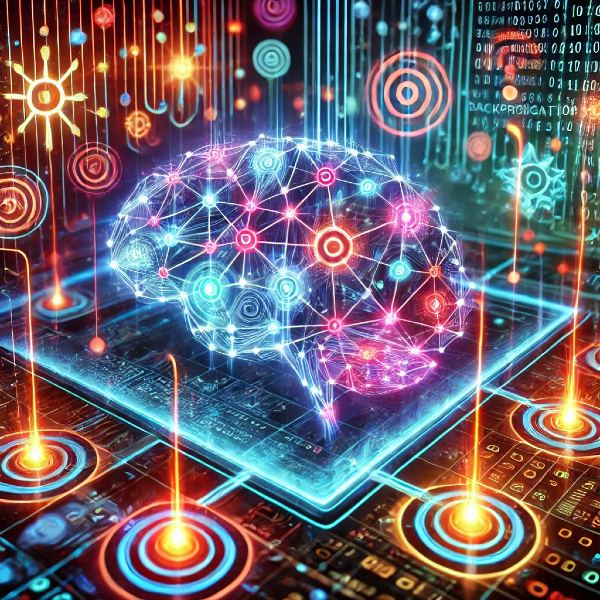Introduction
Artificial intelligence (AI) is transforming various fields of study, and the realm of animal behavior is no exception. By leveraging AI, researchers can gain deeper insights into the intricate patterns and dynamics of animal behavior, enabling more effective conservation strategies and enhancing our understanding of the natural world. The integration of AI in studying animal behavior opens up new avenues for observing, analyzing, and interpreting the complex interactions within animal communities.
The use of AI in animal behavior studies is not just about automation and data collection. It represents a paradigm shift in how scientists approach the study of wildlife, offering unprecedented opportunities to monitor animals in their natural habitats without intrusive methods. This technology aids in processing large datasets, identifying subtle patterns, and providing predictive models that were previously unattainable through traditional methods.
This blog post delves into the multifaceted role of AI in studying animal behavior, highlighting its transformative impact on wildlife research, animal communication studies, conservation efforts, and future prospects. By examining specific examples and applications, we will explore how AI is reshaping our understanding of animal behavior and contributing to the preservation of biodiversity.
Understanding the Role of AI in Studying Animal Behavior
Artificial intelligence plays a crucial role in modern animal behavior studies by enabling researchers to gather and analyze data more efficiently. Traditional methods of studying animal behavior often rely on direct observation and manual data recording, which can be time-consuming and prone to human error. AI, however, offers automated solutions that can process large volumes of data quickly and accurately.
For example, AI-powered camera traps and drones are now widely used to monitor wildlife in their natural habitats. These technologies can capture vast amounts of footage, which AI algorithms can then analyze to identify species, track movements, and detect behaviors. This not only saves time but also allows researchers to study animals in remote and inaccessible areas. A notable example is the use of AI to monitor the behavior of endangered species like the snow leopard in the Himalayas, providing valuable data for conservation efforts.
Moreover, AI facilitates the analysis of complex behavioral patterns that might be difficult to discern through human observation alone. Machine learning algorithms can identify subtle changes in behavior that could indicate stress, illness, or other important factors. This capability is particularly useful in studies of social animals, where interactions and hierarchies can be complex. For instance, AI has been used to study the social dynamics of meerkat colonies, revealing insights into their cooperative behaviors and social structures.
How AI is Changing Wildlife Research
The integration of artificial intelligence into wildlife research has revolutionized how scientists gather, analyze, and interpret data. AI technologies, such as machine learning and computer vision, enable the automated analysis of vast amounts of data, which was previously unmanageable with traditional methods. This has led to more accurate and comprehensive studies of wildlife behavior and ecology.
One of the most significant changes AI has brought to wildlife research is the ability to monitor animals remotely and non-invasively. Drones equipped with AI-powered cameras can cover large areas and capture high-resolution images and videos of wildlife in their natural habitats. These images are then processed by AI algorithms to identify species, count individuals, and track their movements over time. For example, AI has been used to monitor the migration patterns of birds, providing crucial data for understanding the impacts of climate change on avian populations.
AI also enhances the accuracy and efficiency of ecological surveys. Traditional survey methods often involve manual counting and identification of species, which can be labor-intensive and subject to human error. AI algorithms, however, can analyze images and audio recordings to accurately identify and count species, even in challenging environments. For instance, AI has been used to conduct underwater surveys of marine life, identifying species from audio recordings of their calls and visual data from underwater cameras.
Furthermore, AI is instrumental in predicting and modeling wildlife populations and behaviors. Machine learning models can analyze historical data and environmental variables to predict future trends in wildlife populations and their behaviors. This predictive capability is essential for conservation planning and management. For example, AI models have been used to predict the population dynamics of endangered species like the African elephant, helping conservationists develop targeted strategies to protect them.
The Impact of AI on Animal Communication Studies
Artificial intelligence has significantly impacted the study of animal communication, providing new tools and methodologies for analyzing complex vocalizations and other forms of communication. Traditional methods of studying animal communication often involve labor-intensive manual analysis, but AI has introduced automated solutions that can process and interpret large datasets more efficiently.
One of the most notable examples of AI in animal communication studies is the analysis of whale songs. Researchers have used machine learning algorithms to analyze the intricate vocalizations of humpback whales, uncovering patterns and structures that were previously undetectable. This has led to a deeper understanding of the social and communicative behaviors of these majestic creatures. For instance, a study published in the Journal of Acoustical Society of America used AI to categorize whale songs into different types and sequences, revealing insights into their communication networks.
Similarly, AI has been employed to study bird songs, enabling researchers to identify species and individual birds based on their vocalizations. This is particularly useful in monitoring bird populations and studying their behaviors. For example, the Merlin Bird ID app developed by the Cornell Lab of Ornithology uses AI to identify birds by their songs and calls, providing valuable data for ornithologists and bird enthusiasts alike. This technology not only aids in species identification but also contributes to conservation efforts by monitoring bird population trends.
Furthermore, AI is enhancing the study of non-vocal communication in animals. For instance, researchers have used AI to analyze the gestures and facial expressions of primates, providing insights into their social interactions and emotional states. A study published in Nature Communications demonstrated the use of AI to analyze the facial expressions of chimpanzees, revealing patterns that correlate with specific social contexts and emotional states.
The ability of AI to analyze large and complex datasets with high precision is transforming our understanding of animal communication. By uncovering patterns and structures in vocalizations and other forms of communication, AI is helping researchers gain new insights into the social lives and behaviors of animals. This not only advances our scientific knowledge but also has practical applications in conservation and wildlife management.
AI in Conservation: A New Approach to Wildlife Protection
The application of artificial intelligence in conservation efforts represents a new and innovative approach to wildlife protection. AI technologies are being used to monitor endangered species, combat poaching, and manage conservation areas more effectively. This integration of technology into conservation strategies is enhancing our ability to protect biodiversity and ensure the survival of vulnerable species.
One of the key ways AI is being used in conservation is through the deployment of AI-powered camera traps. These devices are placed in strategic locations within conservation areas to capture images of wildlife. AI algorithms then analyze these images to identify species, count individuals, and monitor their behaviors. This provides conservationists with real-time data on wildlife populations, enabling them to make informed decisions about management and protection strategies. For example, AI-powered camera traps have been used to monitor the populations of critically endangered species like the Amur leopard in Russia, providing valuable data for conservation efforts.
AI is also playing a crucial role in combating poaching, one of the most significant threats to wildlife conservation. AI technologies are used to analyze data from various sources, such as camera traps, drones, and acoustic sensors, to detect and predict poaching activities. For instance, AI algorithms can analyze images and videos from camera traps to identify human intruders and alert park rangers in real-time. Additionally, AI models can predict poaching hotspots by analyzing historical data on poaching incidents and environmental variables. This predictive capability helps conservationists deploy resources more effectively and prevent poaching before it occurs.
Furthermore, AI is being used to manage conservation areas more efficiently. Machine learning models can analyze data on environmental conditions, wildlife populations, and human activities to optimize the management of protected areas. For example, AI has been used to analyze satellite imagery and environmental data to assess the health of ecosystems and identify areas that require intervention. This enables conservationists to prioritize their efforts and allocate resources where they are needed most.
The use of AI in conservation is not limited to monitoring and protection efforts. AI technologies are also being used to engage the public and raise awareness about conservation issues. For instance, AI-powered virtual reality experiences and interactive apps are being developed to educate people about endangered species and the importance of conservation. These tools not only enhance public awareness but also foster a sense of connection and responsibility towards wildlife protection.
The Future of AI in Animal Behavior Studies
The future of artificial intelligence in animal behavior studies holds immense potential for advancing our understanding of wildlife and improving conservation efforts. As AI technologies continue to evolve, their applications in animal behavior research are expected to become even more sophisticated and impactful.
One promising area for the future is the development of more advanced AI algorithms that can analyze complex behavioral patterns in real-time. This would enable researchers to gain deeper insights into the social dynamics, communication, and interactions of animal populations. For example, future AI systems could be used to monitor and analyze the behavior of large herds of animals, providing valuable data on their movement patterns, social structures, and responses to environmental changes.
Another exciting prospect is the integration of AI with other emerging technologies, such as wearable sensors and the Internet of Things (IoT). By combining AI with wearable devices that can monitor physiological and environmental parameters, researchers can gain a more comprehensive understanding of animal behavior. For instance, wearable sensors equipped with AI could track the health and activity levels of individual animals, providing real-time data on their well-being and alerting researchers to any signs of distress or illness.
AI is also expected to play a crucial role in the development of personalized conservation strategies. By analyzing data on individual animals and their habitats, AI can help conservationists develop tailored interventions that address specific threats and challenges. This approach would enhance the effectiveness of conservation efforts and ensure the long-term survival of endangered species.
Moreover, the future of AI in animal behavior studies is likely to involve greater collaboration between researchers, conservationists, and technology developers. By working together, these stakeholders can develop innovative solutions that leverage the full potential of AI to protect wildlife and preserve biodiversity. This collaborative approach would also facilitate the sharing of data and resources, leading to more comprehensive and coordinated conservation efforts.
In conclusion, the future of AI in animal behavior studies is bright and full of possibilities. As AI technologies continue to advance, their applications in wildlife research and conservation will become even more powerful and transformative. By embracing these innovations, we can gain a deeper understanding of the natural world and develop more effective strategies to protect it.
Conclusion
Artificial intelligence is revolutionizing the study of animal behavior, offering new tools and methodologies that enhance our understanding of wildlife and improve conservation efforts. From monitoring wildlife populations to analyzing complex communication patterns, AI is transforming how researchers approach the study of animal behavior.
The integration of AI in wildlife research has led to more accurate and efficient data collection, enabling researchers to gather insights that were previously unattainable. AI-powered technologies, such as camera traps and drones, have revolutionized the way we monitor and protect endangered species, providing real-time data that informs conservation strategies.
Moreover, AI has significantly impacted the study of animal communication, uncovering patterns and structures in vocalizations and other forms of communication that were previously undetectable. This has led to a deeper understanding of the social lives and behaviors of animals, contributing to more effective conservation efforts.
The use of AI in conservation represents a new and innovative approach to wildlife protection. AI technologies are being used to monitor endangered species, combat poaching, and manage conservation areas more effectively. This integration of technology into conservation strategies is enhancing our ability to protect biodiversity and ensure the survival of vulnerable species.
Looking ahead, the future of AI in animal behavior studies holds immense potential for advancing our understanding of wildlife and improving conservation efforts. As AI technologies continue to evolve, their applications in animal behavior research are expected to become even more sophisticated and impactful, leading to deeper insights and more effective conservation strategies.
References
Understanding the Various Levels of Artificial Intelligence The levels of AI range from narrow AI, which performs specific tasks, to artificial general intelligence (AGI), which possesses human-like cognitive abilities. There is also artificial superintelligence (ASI), which surpasses human intelligence in all aspects. For more on the levels of AI, visit this article.
3.3. From Narrow to General: Types of Artificial Intelligence Explained Narrow AI is specialized for particular tasks, such as language translation or image recognition, while AGI can understand, learn, and apply knowledge in a generalized manner. ASI, still theoretical, would exceed human intelligence and capabilities. For an explanation of these types, refer to this resource.
3.4. A Breakdown of the Different Forms of Artificial Intelligence AI can be broken down into various forms based on functionality and capabilities, including reactive machines, limited memory, theory of mind, and self-aware AI. Each form represents a different stage in the development and application of AI technologies. For a detailed breakdown, see this article.
3.5. Defining the Categories of Artificial Intelligence The categories of AI include rule-based systems, machine learning, neural networks, and deep learning. Each category encompasses different techniques and applications, contributing to the overall advancement of AI. For definitions of these categories, visit this resource.










